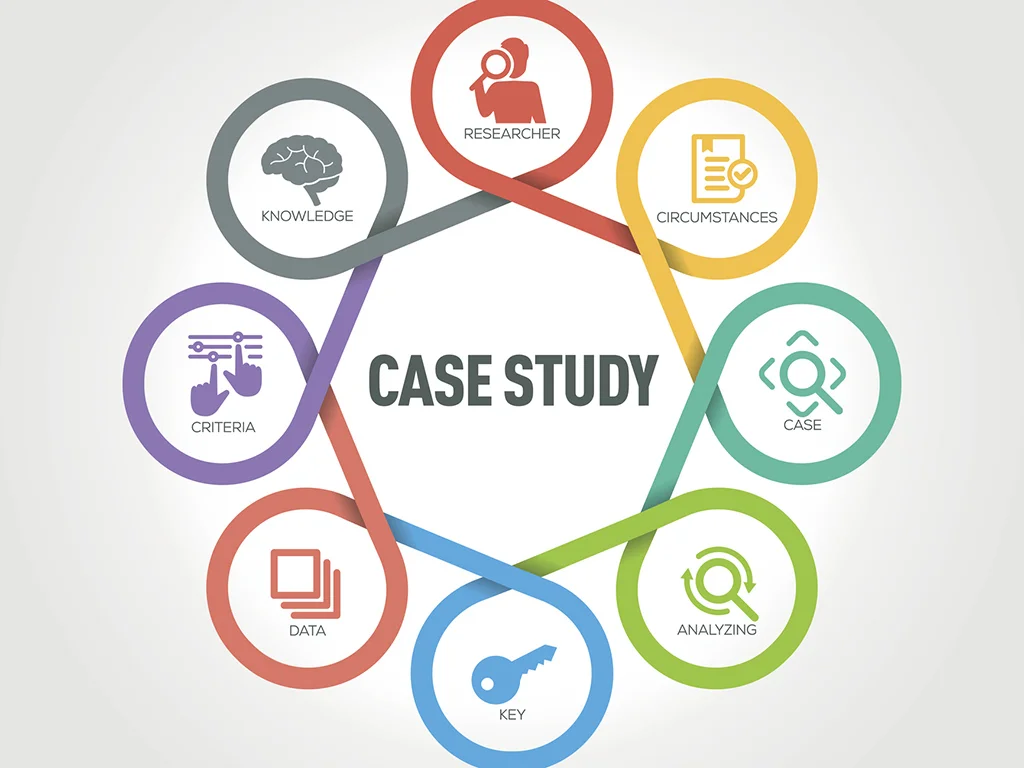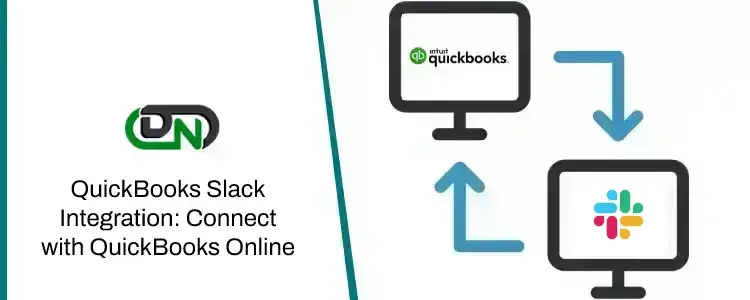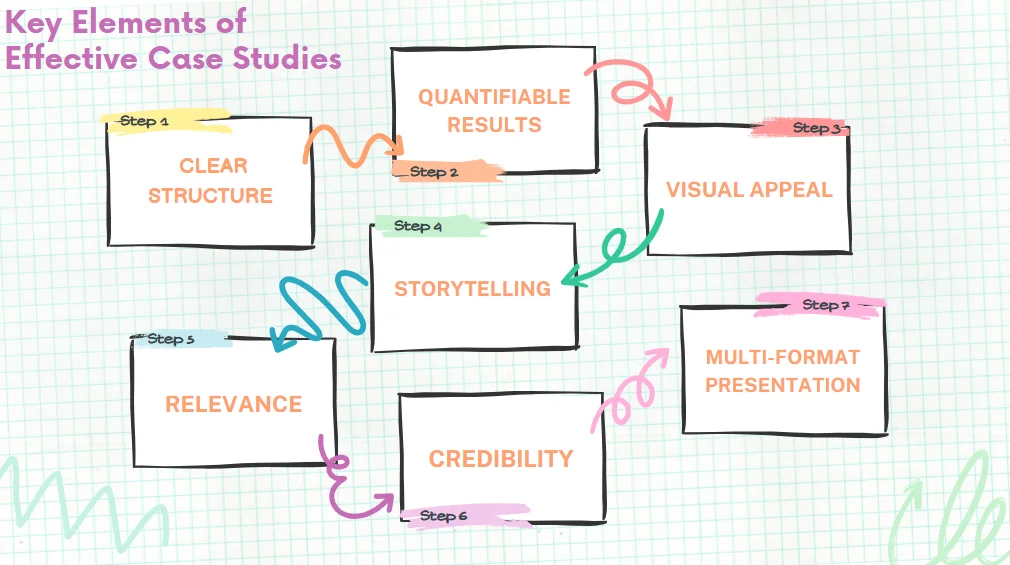
Picture this: You're a marketing executive for a promising tech startup. You've got an innovative product that could revolutionize the industry, but you're struggling to convince potential clients of its value. Sound familiar? This is where the power of practical case studies comes into play. However, not just any case study will do. You need one that stands out, captivates your audience, and ultimately drives conversions.

Join me on a journey through the landscape of exemplary case studies, where we'll uncover the secrets that make them truly shine. We'll explore real-world examples, dissect their essential elements, and learn how to craft compelling narratives that resonate with your target audience.
Imagine you're a growing e-commerce business struggling to manage your marketing efforts effectively. You stumble upon HubSpot's case study featuring Shopify Plus. From the moment you start reading, you're hooked. Why? Because HubSpot has mastered the art of storytelling in B2B marketing.

The narrative unfolds like a gripping short story. You meet the protagonist - Shopify Plus - facing the villainous challenges of scaling their marketing efforts. Enter the hero - HubSpot - armed with powerful marketing tools. As you read on, you can almost feel the tension building until victory is achieved with impressive results.
What makes this customer success case study stand out?
Key Takeaway: This case study excels in blending quantitative data with qualitative insights, creating a compelling story that resonates with potential clients facing similar challenges.
Now, let's shift gears and imagine you're a finance professional drowning in a sea of emails and inefficient communication. You come across Slack's case study on Intuit QuickBooks, and it's like a breath of fresh air. Why? Because it's a masterclass in simplicity and substance.

The case study doesn't overwhelm you with unnecessary details. Instead, it presents a straightforward, concise narrative that gets straight to the point. You can almost hear the collective sigh of relief from the Intuit QuickBooks team as Slack solves their communication woes.
What sets this B2B marketing case study apart?
Key Takeaway: This case study demonstrates that effectiveness doesn't always require lengthy narratives. A well-structured, concise format can be just as impactful.
Let's transport ourselves to the world of network solutions. You're an IT decision-maker looking for ways to streamline your digital experience. You stumble upon Adobe's case study on Juniper Networks, and suddenly, you're not just reading - you're experiencing.

Adobe's case study incorporates videos, interviews, and interactive graphics, creating an immersive experience that draws you in. It's as if you're watching a documentary rather than reading a B2B case study.
Why does this customer success case study stand out?
Key Takeaway: Adobe’s approach proves that incorporating multimedia can elevate a case study from a simple read to a captivating experience, making it memorable and persuasive.
Now, let's tune into the world of music streaming. You're a business owner looking to improve your customer relationship management. You come across Salesforce's case study on Spotify, and suddenly, CRM doesn't seem so dull anymore.
What sets this case study apart is its focus on the human element. It's not just about software and systems - it's about people. You can almost hear the Spotify team members speaking to you, sharing their experiences and insights as you read.

Why does this customer success case study hit all the right notes?
Key Takeaway: By focusing on the people behind the business challenges and solutions, Salesforce creates a more emotionally resonant case study.

Now that we've explored these stellar examples let's distill the key elements that make them stand out. Think of these as the secret ingredients in your case study recipe:
a) Clear Structure: Like any good story, compelling case studies follow a logical flow. They typically adhere to the problem-solution-result format, guiding the reader through the client's journey.
b) Quantifiable Results: Remember, seeing is believing. Adequate case studies don't just claim success; they prove it with complex numbers and specific metrics. It's the difference between saying, "We improved efficiency" and "We reduced processing time by 50%."
c) Visual Appeal: In today's fast-paced world, visual appeal is crucial. Visually appealing case studies are more likely to engage readers and leave a lasting impression, whether through infographics, videos, or simply a clean layout.
d) Storytelling: The best case studies weave data and facts into a compelling narrative. They don't just present information; they tell a story that keeps the reader invested from beginning to end.
e) Relevance: These case studies resonate with their target audience by focusing on common industry challenges. They make the reader think, "That could be us!"
f) Credibility: Quotes from client team members and specific details about the implementation process lend authenticity to the studies. They provide social proof and build trust with potential clients.
g) Multi-format Presentation: Offering the case study in various formats (text, video, infographics) caters to different content consumption preferences, ensuring the message reaches a wider audience.
Now that we've uncovered the secrets of practical case studies let's put that knowledge into action. Here's your step-by-step guide to creating a case study that stands out:
Step 1: Choose Your Star Select a client success story that aligns with your target audience's needs and challenges. Remember, relevance is key!
Step 2: Gather Your Data Collect both quantitative and qualitative data. Remember those impressive metrics we saw in our examples? That's what you're aiming for.
Step 3: Craft Your Narrative Structure your case study like a story. Introduce your client (the protagonist), present their challenge (the conflict), showcase your solution (the resolution), and celebrate the results (the happy ending).
Step 4: Add the Human Touch Include quotes and insights from your client. Let their voice shine through and add credibility to your story.
Step 5: Make it Visually Appealing Incorporate relevant images, charts, and infographics. Remember Adobe's multimedia approach? Strive for that level of visual engagement.
Step 6: Review and Refine Edit your case study for clarity and conciseness. Channel Slack's approach is to say more with less.
Step 7: Promote and Share Once your case study is ready, share it across relevant platforms. Make it easy for your target audience to find and engage with your success story.
Creating compelling case studies is no small feat. It requires time, skill, and a deep understanding of your audience and industry. This is where professional case study writing services come into play.
These services offer several advantages:
When choosing a case study writing service, look for providers with experience in your industry and a portfolio of engaging results-driven case studies.
We've journeyed through the landscape of practical case studies, exploring stellar examples and uncovering the secrets to their success. From HubSpot's masterful storytelling to Adobe's multimedia approach, we've seen how diverse and impactful case studies can be.
Remember, the most compelling case studies balance complex data and persuasive storytelling, presenting your successes in a way that resonates with potential clients and demonstrates the value of your products or services.
At LexiConn, we're passionate about helping you craft case studies that genuinely shine. Let your success stories speak volumes. Let's get started on your standout case study today!



I have read and accept the Privacy Policy
Read More